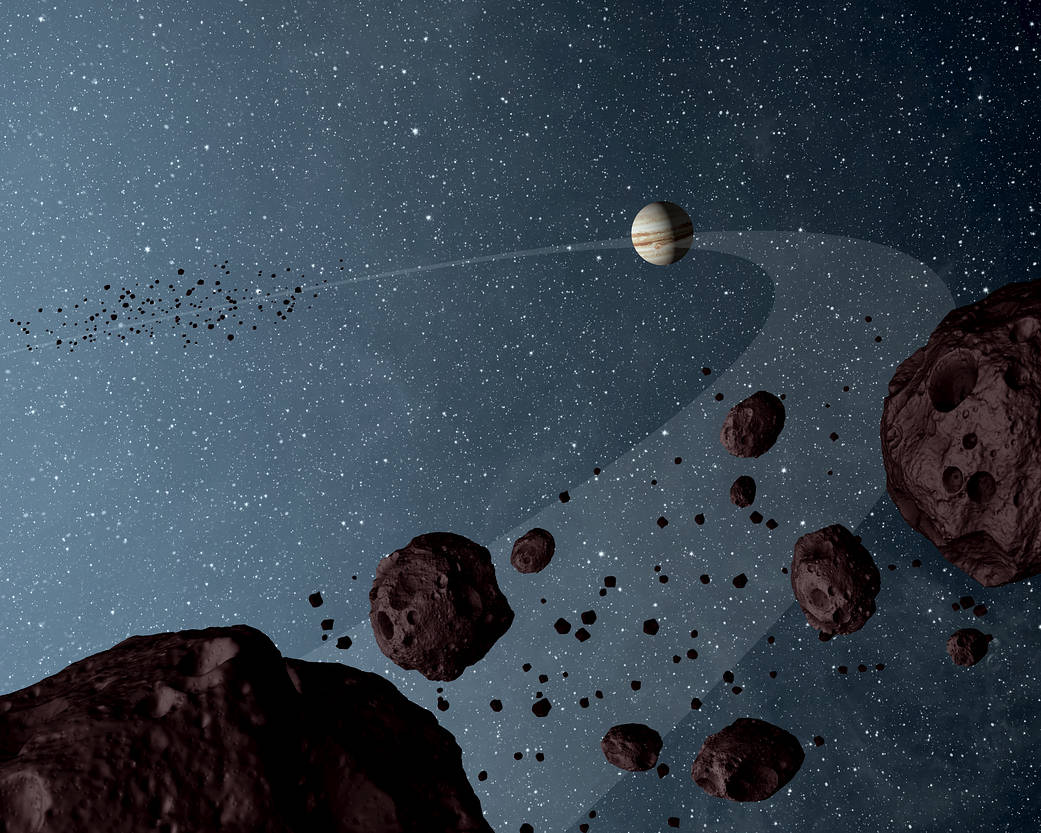Slated to launch in October 2021, NASA’s Lucy mission will be the first space mission to study the Trojan asteroids, leftover building blocks of the solar system’s outer planets orbiting the Sun at the distance of Jupiter. The mission takes its name from the fossilized human ancestor (called “Lucy” by her discoverers) whose skeleton provided unique insight into humanity’s evolution. Likewise, the Lucy mission will revolutionize our knowledge of planetary origins and the formation of our solar system.
This artist’s impression shows Jovian Trojans, based on data from a 2012 study by NASA’s Wide-field Infrared Explorer, or WISE. The Jovian Trojans – asteroids that lap the Sun in the same orbit as Jupiter – are uniformly dark with a hint of burgundy color, and have matte surfaces that reflect little sunlight. The results are illustrated in this artist’s concept, showing both the leading and trailing packs of Trojans in orbit with Jupiter. Observations from WISE also confirmed the previous suspicion that there are more asteroids in the leading pack of Trojans (seen in the distance) than the trailing bunch.
Image credit: NASA/JPL-Caltech
计划于2021年10月发射的“露西”(Lucy)任务将是第一个研究特洛伊小行星的太空任务,特洛伊小行星是太阳系外行星在木星距离绕太阳运行时遗留下来的组成部分。这项任务得名于人类祖先的化石(发现者称其为“露西”),其骨骼为人类进化提供了独特的视角。同样,露西任务将彻底改变我们对行星起源和太阳系形成的认识。
基于NASA广域红外探测器WISE 2012年的研究数据,这幅艺术家的图像展示了木星的特洛伊小行星。木星特洛伊小行星与木星在同一轨道上环绕太阳运行,它们均匀地呈暗红色,表面无光泽,很少反射阳光。结果在这幅艺术家的概念图中得到了说明,显示了在木星轨道上领先和尾随的特洛伊星群。WISE的观测也证实了之前的猜测,即领先的一群特洛伊(从远处看)中的小行星比尾随的一群要多。
影像来源:NASA/JPL-Caltech







